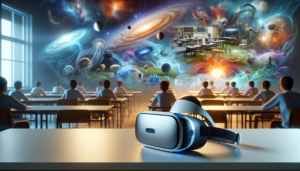What if I told you that our environment is constantly sending us messages? The health of our planet, from the air we breathe to the water we drink, is monitored through various innovative approaches. These methods not only help us understand the state of our environment but also guide us in making informed decisions to protect it. In this article, I’ll take you through some fascinating innovations in environmental monitoring.
Understanding Environmental Monitoring
Environmental monitoring involves the systematic collection of data regarding various elements of our surroundings. This could include air quality, water quality, soil health, and even biodiversity. The primary goal is to understand the state of our environment and how it changes over time. By systematically gathering information, I can make more informed decisions that impact both the planet and me.
Monitoring is crucial because it acts as an early warning system. For example, if air quality deteriorates, timely data might alert us to potential health risks. Similarly, monitoring water quality can help in promptly addressing pollution sources before they become larger problems.
Traditional Environmental Monitoring Methods
Ground-Based Monitoring
Ground-based monitoring is one of the oldest forms of environmental surveillance. I often think of it like checking the weather with a thermometer—it’s straightforward and reliable. This method typically involves setting up monitoring stations equipped with sensors. These sensors collect information on different parameters, such as temperature, humidity, and chemical pollutants.
One of the benefits of ground-based monitoring is its accuracy. The instruments are placed strategically in areas of interest, allowing for precise measurements. However, the major downside is the high costs associated with setting up and maintaining these stations.
Remote Sensing
Remote sensing is another traditional approach I’ve encountered. This method utilizes satellites or aerial vehicles to gather data over large areas. For example, I can analyze satellite images to monitor deforestation or track ice cap melting. It allows researchers like me to collect information over vast and often inaccessible regions; however, the data can sometimes be less detailed than on-the-ground measures.
Innovative Technology in Environmental Monitoring
Drones
I’ve seen how drones are revolutionizing the way we monitor the environment. These flying devices can access remote areas and provide real-time data. Equipped with cameras and sensors, drones allow me to gather high-resolution images and information that can help monitor deforestation, wildlife habitats, and even disaster zones.
The best part is that they can cover a lot of ground quickly. I can establish flight paths and capture overlapping images, creating detailed maps of environmental changes. Whether monitoring coastal erosion or mapping vegetation, drones make it easier than ever to accomplish our monitoring objectives.
Internet of Things (IoT)
The Internet of Things (IoT) is taking environmental monitoring to the next level. By connecting various devices and sensors to the internet, I can gather and analyze data in real-time. For example, I can install IoT sensors in rivers to measure water quality parameters like pH, turbidity, and temperature.
This data can be sent directly to my computer or smartphone, enabling instant access to crucial information. The automated alerts allow me to respond quickly to any changes in environmental conditions, such as a sudden drop in water quality that may indicate pollution.
Artificial Intelligence (AI)
Artificial Intelligence has become an invaluable ally in analyzing complex environmental data. I can use AI algorithms to identify patterns and trends that would be challenging to recognize manually. For instance, I might use AI to analyze satellite images of deforestation and predict future trends based on historical data.
By leveraging machine learning, I can refine my predictive models, which help in resource allocation and conservation efforts. This means that my ability to anticipate environmental changes has vastly improved, making it easier to take proactive measures.
Mobile Applications
Mobile technology is another innovative approach that I value for environmental monitoring. There are several apps designed for citizens to monitor their environments actively. I can contribute to data collection by reporting issues like illegal dumping or unusual pollution.
These applications serve as platforms for engagement, and they empower everyday people like me to participate in environmental stewardship. With the help of technology, I can play a part in creating a more sustainable future.
Challenges in Environmental Monitoring
Data Accuracy
One of the challenges I often encounter is the accuracy of the data collected. Sometimes, ground sensors may malfunction, or drones may face technical issues, leading to unreliable data. Ensuring the accuracy and reliability of the equipment I use is vital for effective monitoring.
Cost Implications
Environmental monitoring can be pricey. Whether I’m considering the cost of setting up sensors, drones, or satellite imagery, financial resources can strain programs. Efficient budgeting and seeking funding from governmental and non-governmental organizations can help alleviate this burden.
Collaboration Across Disciplines
Collaborating with scientists, policymakers, and local communities can be a double-edged sword. While the exchange of ideas and expertise is enriching, the challenge lies in aligning everyone’s priorities. As I work with diverse groups, I find it essential to establish a shared vision for monitoring efforts.
The Role of Citizen Science
Engaging the Public
I’m excited to see the growing role of citizen science in environmental monitoring. Engaging volunteers from the community allows me to collect large amounts of data that would be difficult for me to gather alone. This approach not only increases data availability but also fosters a sense of ownership among participants.
People can get involved in various ways, such as participating in tree planting events or uploading pictures of wildlife sightings. This communal effort creates a shared responsibility for monitoring our environment and raises awareness about ecological issues.
Crowdsourcing Data
Crowdsourcing is another fascinating aspect of citizen science. These platforms enable individuals to share their findings, creating a rich database for analysis. For instance, when I notice a particular species of bird in my area, I can use an app to report it, contributing to broader ecological studies.
The collective data collected from numerous participants can lead to significant insights, allowing researchers and policymakers to make better-informed decisions.
Real-World Applications of Innovative Monitoring
Wildlife Tracking
Tracking wildlife has always fascinated me. Innovation in satellite tracking and GPS collars has dramatically changed how I monitor animal migrations and behaviors. For example, through GPS data collected from tagged animals, I can observe movement patterns that inform conservation strategies.
By knowing where animals migrate, I can work to protect their habitats, ensuring that they thrive. This careful monitoring helps to mitigate human-animal conflicts and preserves biodiversity.
Climate Change Research
I’m deeply involved in climate change research, where innovative monitoring techniques play a crucial role. With tools like remote sensing and ground-level observation, I study phenomena such as rising sea levels, temperature changes, and extreme weather patterns.
Data collected from these innovative approaches can be used to model climate scenarios, guiding policy and conservation efforts. By staying informed about future climate patterns, I can help communities prepare for potential impacts.
Urban Environmental Monitoring
Urban areas often present unique challenges in environmental monitoring. Pollution levels, noise, and temperature variations are all elements that I carefully track in city settings. With the advent of smart technology, I can deploy sensors throughout urban spaces to collect real-time data.
This information helps city planners make informed decisions regarding green spaces, transportation, and pollution control, ultimately improving the quality of life for residents.
Future Directions in Environmental Monitoring
Integration of Technologies
I believe that the future of environmental monitoring lies in integrating diverse technologies. For instance, combining drone data with IoT sensors and AI analytics could create a comprehensive environmental assessment system. Such integrated approaches can enhance accuracy and efficiency, allowing me to gather richer datasets for analysis.
Policy Development
As monitoring techniques advance, it would be wise for policymakers to develop regulations that prioritize environmental preservation. Innovative technologies can aid in compliance monitoring, making it easier to enforce environmental regulations. In my view, developing strong policies based on solid data will be critical for sustainable development efforts.
Continuous Engagement with Communities
I see immense potential in continuous community engagement around monitoring efforts. Involving local stakeholders ensures that environmental monitoring addresses community-specific needs and concerns. As I take part in these discussions, I can advocate for practices that benefit both people and the environment.
Conclusion
Every day, I witness the environmental challenges facing our planet, from climate change to biodiversity loss. However, innovative approaches to environmental monitoring provide me with the tools and knowledge necessary to make a difference. By employing new technologies, engaging in citizen science, and collaborating across various disciplines, I have a better opportunity to protect our environment.
As I reflect on these innovative solutions, I feel hopeful. The commitment and passion of individuals and communities play a significant role in shaping a sustainable future. Environmental monitoring serves as my guide, helping illuminate the path ahead as we work together to safeguard the planet for future generations.






